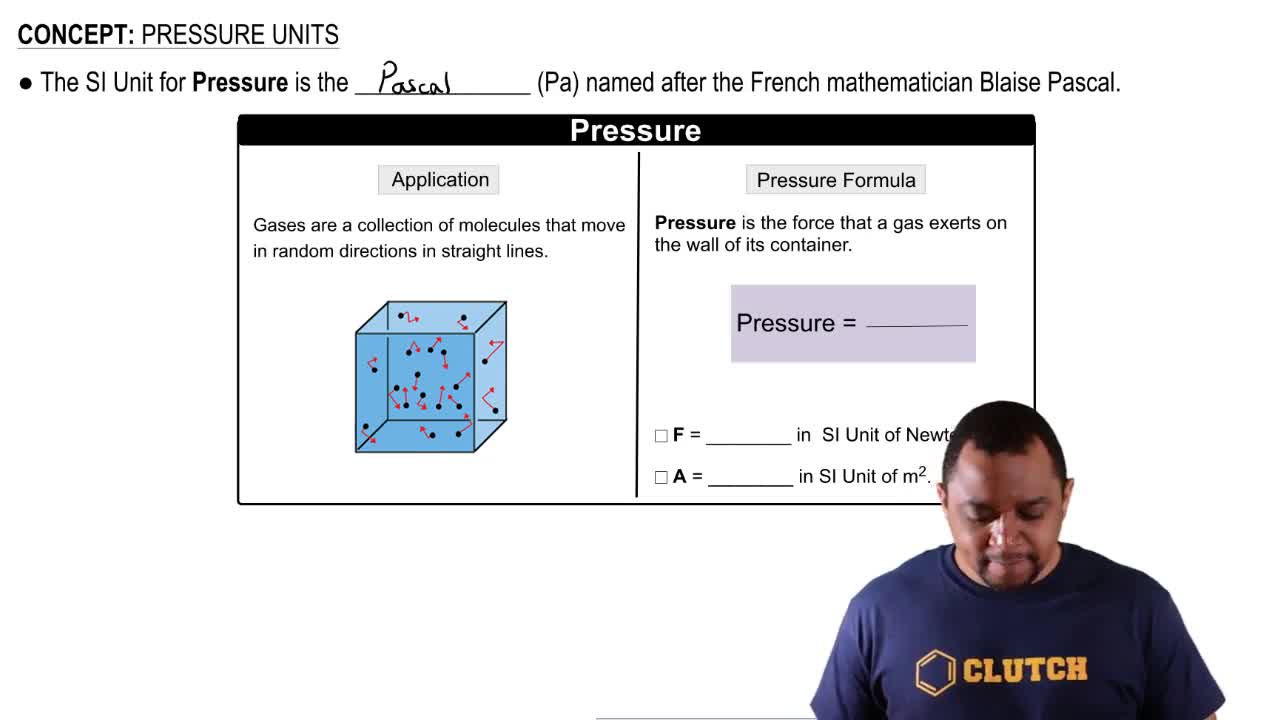Here are the essential concepts you must grasp in order to answer the question correctly.
Gas Behavior and Pressure
Gases behave differently under varying pressure conditions. At high pressure, gas particles are forced closer together, increasing the influence of intermolecular forces. This contrasts with low pressure, where particles are more spread out, and these forces have a minimal effect on the gas's volume.
Recommended video:
Intermolecular Forces
Intermolecular forces are the attractive forces between molecules that can affect the physical properties of substances. In gases, these forces are generally weak, but at high pressures, they become significant enough to alter the expected behavior of the gas, leading to deviations from ideal gas behavior.
Recommended video:
Intermolecular vs Intramolecular Forces
Ideal Gas Law Limitations
The ideal gas law (PV=nRT) assumes that gas particles do not interact and occupy no volume. However, real gases experience intermolecular attractions, especially at high pressures, causing the actual volume to be smaller than predicted by the ideal gas law. This highlights the limitations of the ideal gas law in accurately describing real gas behavior.
Recommended video:




